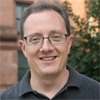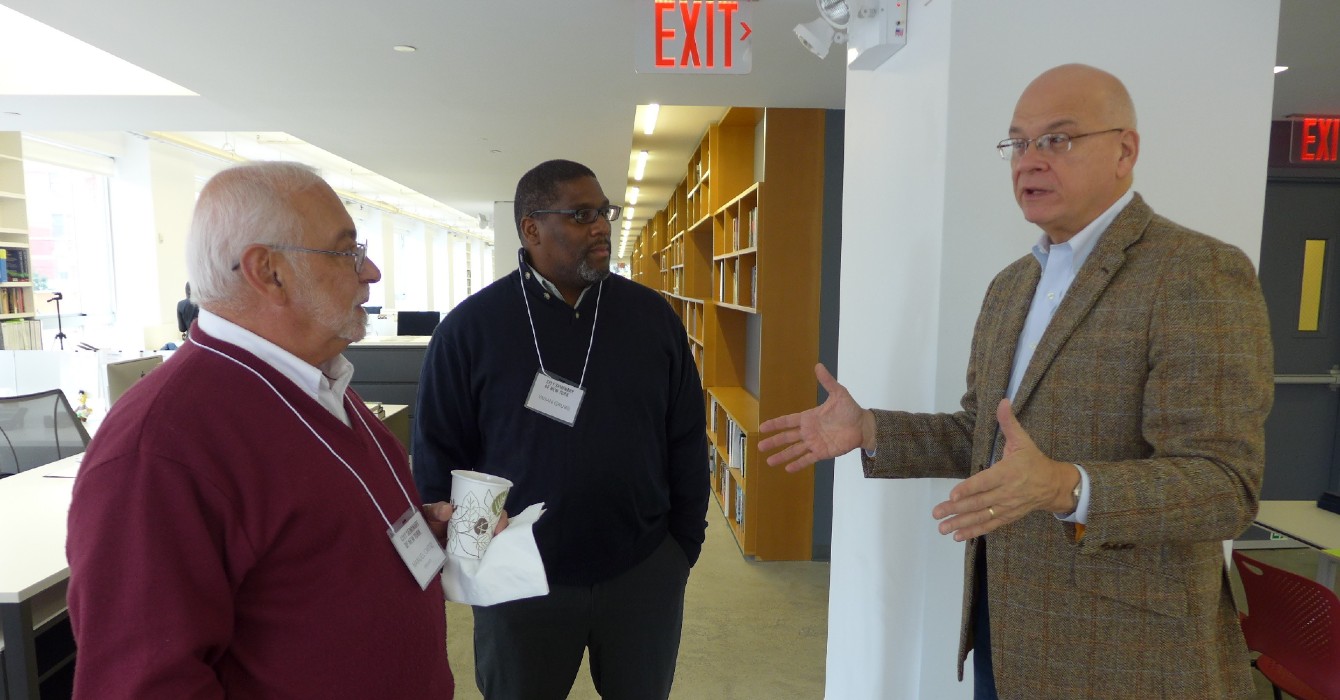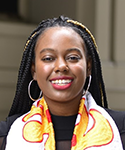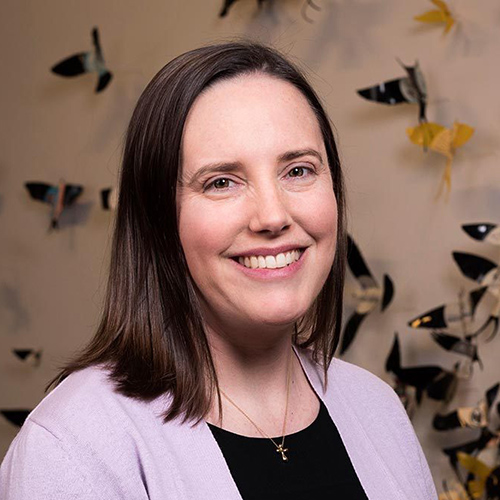In many ways, Amos Yong has been preparing to write his most recent book for two decades. As a professor of theology at Bethel University, then a professor and dean at Regent University’s School of Divinity, and now a professor, dean and chief academic officer at Fuller Theological Seminary, Yong has taught theology at multiple levels.
His book, part of the Theological Education Between the Times series, grew out of the different experiences in this work, he said. It was also framed and influenced by his ecclesial background.
“I’m credentialed as a minister in Pentecostal denominations and churches, so I bring that set of experiences to my work as a theologian,” he said. “I’ve attempted to do that in a variety of theological areas, and so when it came time to write this book about theological education particularly, I focused on how the Pentecostal-charismatic world -- churches, realities, experiences -- might invite us to think about theological education.”
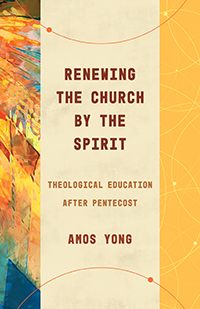 Yong spoke about his book, “Renewing the Church by the Spirit: Theological Education After Pentecost,” with Faith & Leadership’s Aleta Payne. The following is an edited transcript.
Yong spoke about his book, “Renewing the Church by the Spirit: Theological Education After Pentecost,” with Faith & Leadership’s Aleta Payne. The following is an edited transcript.
Faith & Leadership: Why focus your book on the Spirit?
Amos Yong: If you go through the books that I’ve published over the last two decades, in the majority of them you’ll see the Spirit in the title or you’ll see Pentecost mentioned. You might say that for those who are familiar with my work, this is an extension of a theme that’s been a part of what I’ve been doing, which is bringing a Pentecostal background and experience to various theological topics and questions.
That the title begins with “Renewing the Church” is also important, in that most of the time theological education assumes an ecclesial background -- that seminaries in particular serve churches, denominations and so forth.
At the undergraduate level, theological education serves the purpose of a liberal arts education, and at a third level, doctoral education in theological studies serves as an initiation into guilds, so the church is not a primary audience or constituency.
In this book, I’m really addressing the work of seminaries, less so undergraduate theological instruction, and a bit less so doctoral theological education, although I do [include] some things that are relevant in both of those spheres as well.
Theological education is not for its own sake; it’s for the sake of renewing the church. And there’s a missiological component, which is also a strong part of this book.
F&L: Your book speaks to an ecclesiological, missiological, educational arc. Can you talk about that?
AY: I came to Fuller Seminary at a time when it had three schools: School of Psychology, School of Theology and School of Intercultural Studies, which [earlier] was called the School of World Mission. This three-school structure at Fuller has long roots going back to the early ’60s, when schools of missiology were established in a variety of North American institutions of theological education.
When I came to Fuller, I was invited to be a member of the faculty of the School of Intercultural Studies. I really hadn’t had any formal missiological training, but I had published in the area of missiology, and so this was an invitation for me to deepen my research and work in that area.
The five years that I worked in the School of Intercultural Studies and directed its Ph.D. program really helped me to see the importance of how mission is the mother of theology. In the Calvinist tradition, theology is for the glory of God. But scripturally and even historically, theological reflection is a second-order articulation out of the church’s participation in God’s redemptive work in the world, which is missiology.
It then dawned on me that I was trying to elaborate in this book how theological education serves our participation in the Spirit’s work of enabling the church’s proclamation and embodiment of God’s redeeming the world.
The who of theological education is the church. The what or where-to of theological education is the redemptive work of the mission of God, and the how of theological education is by the Holy Spirit -- and that is how the book is structured. The three parts thus also reveal how my journey through the missiological disciplines gave me a perspective for this book that I wouldn’t have had if I hadn’t come to Fuller Seminary.
F&L: Has the pandemic influenced your view of this?
AY: I actually finished writing this book two years ago, in the winter of 2019. The book went into production before the pandemic, so there’s a sense in which everything that we do is date stamped and ought to be read in that context. Might I write a different book if “Theological Education After the Pandemic” were the subtitle? I think I would.
I’m hopeful, however, that what I’ve got to say in this book has some legs, in the sense that what I’m doing is fundamentally theological. The motors that run the book are ecclesiological, regarding the nature of the church; missiological, concerning the nature of the church’s participation in the mission of God; and pneumatological, about the work of the Spirit in theological education as enabling and empowering the church’s participation in God’s mission.
Relatedly, my ecclesiological, missiological and pneumatological readings are historically situated in the contemporary experience of Pentecostal-charismatic and other churches locally and around the world, and theological education as it exists in this present time. From this perspective, I do feel that what I have to say has enough theological moorings to enable it to speak into the demands posed by our pandemic and even post-pandemic lives.
One further element, however, might also be suggestive about why this book remains relevant. One of the ways I characterize the nature of the church in the present time is as a networked, relational, dynamic reality. The difference is that the previous generation’s characterization of the nature of the church, particularly in North America, was dominated by its denominational structure, one that also framed the ways in which theological institutions interfaced with the church.
As we all know, we’re living in a post-denominational world. So how do we characterize that post-ness? I suggest -- and this even before COVID -- that we use the metaphor of a flat or flattened, as opposed to denominational and hierarchical, church. And this relates also to the flattening of theological education.
The flattened church is what I would call the networked church, and by networked I mean not only electronically and digitally but networked relationally in all the different ways in which networks get established.
What’s interesting for your question about 2020 and COVID is that theological education and even the church have migrated online. We have been even further flattened by COVID, both tragically, in the sense of the loss of life, and also descriptively, in the digital sense of doing church electronically. In that respect, the networked church and a flattening and flattened theological education permeate the book’s argument.
Though written before COVID, a lot of what I assume is the digitization of theological education, already quite expansive before the pandemic but now almost its sole medium in most contexts and promising to persist in that modality even after vaccinations are widely available.
To be sure, not all churches have migrated into solely online expressions, and the diversity of ecclesial forms and media depends on local dynamics. Surely, across North America, the church is deeply fragmented across the spectrum of responses to the coronavirus and its impacts. But the point is still that the church has gone online in ways as never before in the last 10 months and therefore we are living out the flattening of the church and of theological education in an even more intense way over the last year, one that suggests it will be a new normal in the next decade.
Both theologically and conceptually, then, I think that my book could have been subtitled also something along the lines of “Theological Education in a Networked World” and it would have been accurate to its contents and relevant to what we’re all trying to navigate.
F&L: How has being a part of Theological Education Between the Times been valuable to you?
AY: Certainly, one of the most valuable aspects of this experience has been the opportunity to get to know my colleagues that have been a part of this initiative. Many of them I had known before; others I came to know only through that initiative. I just am very grateful for the opportunity to connect with and deepen relationships with wonderful people in theological education.
But more importantly, the group included theologians from very different and diverse backgrounds and ecclesial traditions, and their perspectives have been very enriching for me personally, opening up a journey of the exchange of vastly different ideas.
This fraternity of conversation partners has allowed for the cross-fertilization of different contexts in which we’re navigating and has brought into our common nexus the many kinds of questions that arise in the universe of theological education.
F&L: Is there anything else you would like people to know about this book? One thing you would like them to take away from it when they read it?
AY: One of the most important elements of what I would want to say is that the subtitle of this book is not “Theological Education -- A Pentecostal Perspective.” Rather, it says “Theological Education After Pentecost,” and that’s a big difference. They’re related but should be importantly distinguished.
If I had said “Theological Education -- A Pentecostal Perspective,” then there are a lot of theological schools and many theological educators who may not identify with or resonate with the Pentecostal church, the Pentecostal experience as we understand it in the 20th and 21st centuries. And that’s OK; not all of us come from Pentecostal-charismatic traditions and so on.
But my work as a Pentecostal theologian has been quite intentional in its trajectory over the last two decades to say that while I’ve certainly been informed by my experience as a Pentecostal minister, which has encouraged me to think out of Pentecostal experience, there is a Pentecost experience that is not owned by Pentecostals.
Or we could say that the experience of the Holy Spirit manifest in Pentecostal-charismatic churches is simply one expression of the work of the Spirit of Pentecost that we see in the pages of the New Testament. Pentecost does not belong to only one segment or group of churches.
Pentecost belongs to the church ecumenical, the church of the evangel, the church of Jesus Christ, and from that perspective, my call to any potential readers of this book is that all of us find ourselves after Pentecost, regardless of our ecclesial background, roots or commitments. The incarnation and Pentecost belong to the body of Christ, and there is no body of Christ, the anointed one, without the work of the Spirit. That’s exactly what Christ and Messiah mean.
My summons in this book, then, is to live more fully into the promise of Pentecost for theological education in the 21st century, and I hope that any one of us who works in theological education would welcome that solicitation and embrace the work of the Spirit for our task.


















